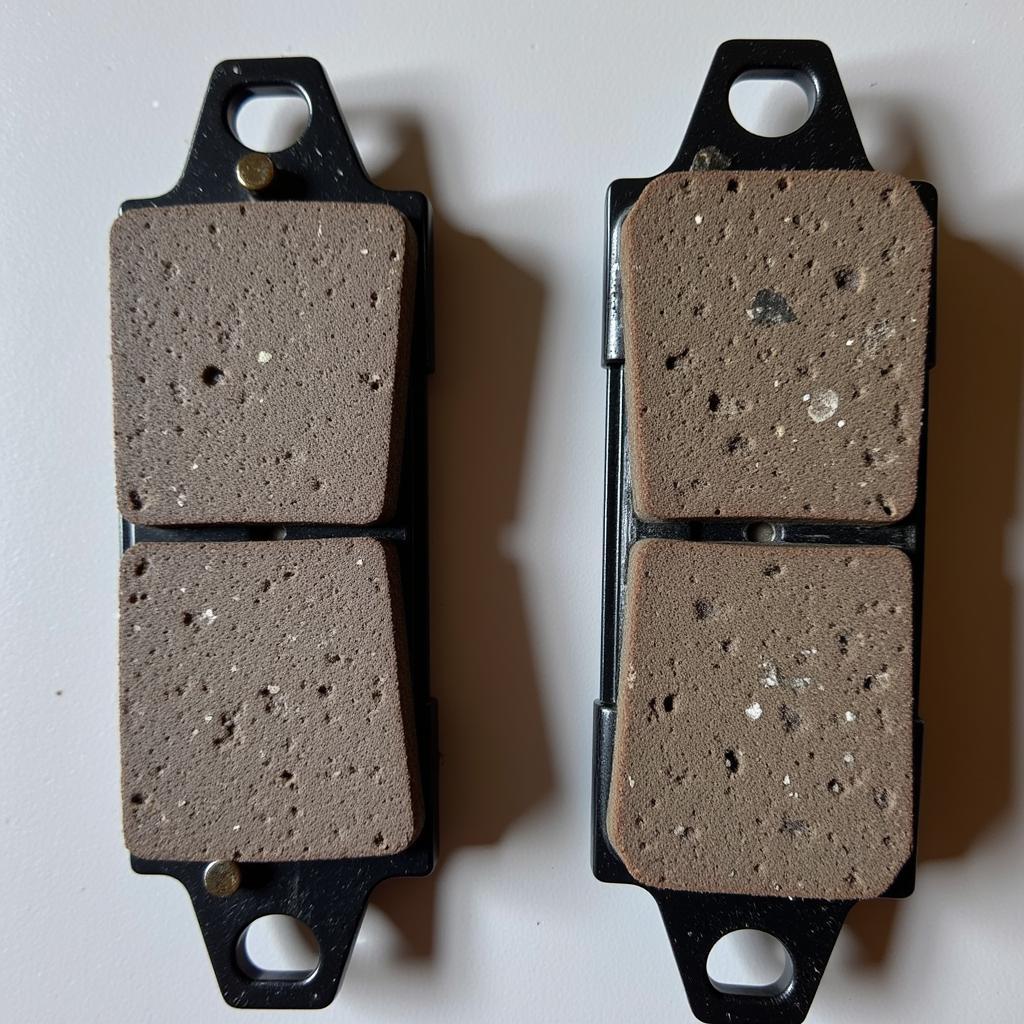The Iveco Eurocargo AdBlue warning light is a common issue that many drivers encounter. This light signifies a problem with the AdBlue system, which is crucial for reducing harmful emissions. When this light comes on, it’s essential to address the issue promptly to avoid potential damage to your vehicle and ensure compliance with environmental regulations.
This guide will provide you with comprehensive information about the AdBlue warning light, its potential causes, troubleshooting steps, and how to reset the system. Let’s dive into the details.
What is AdBlue?
AdBlue is a non-toxic, urea-based solution that is injected into the exhaust system of diesel vehicles to reduce nitrogen oxide (NOx) emissions. It’s a crucial component of the Selective Catalytic Reduction (SCR) system, which is designed to meet stringent environmental regulations.
Why Does the AdBlue Warning Light Come On?
The AdBlue warning light can illuminate for various reasons. Here are some of the most common causes:
- Low AdBlue Level: The most frequent reason for the AdBlue warning light is simply a low AdBlue level in the tank. The system is designed to warn you when the level falls below a certain threshold, prompting you to refill the tank.
- AdBlue Tank Sensor Malfunction: The sensor that monitors the AdBlue level might be malfunctioning, leading to an inaccurate reading and triggering the warning light, even if the tank is full.
- AdBlue Injection System Problem: The system responsible for injecting AdBlue into the exhaust might be experiencing a malfunction, which could include a faulty injector, clogged lines, or an issue with the control unit.
- AdBlue Quality Issue: Using low-quality AdBlue can cause issues with the system. It’s crucial to use only AdBlue that meets the specified standards.
- AdBlue Temperature Issue: Extremely cold weather can affect the AdBlue system, potentially causing the warning light to come on due to freezing.
- Electrical Issues: Faulty wiring, a blown fuse, or a problem with the AdBlue control unit can also lead to the warning light.
How to Troubleshoot the AdBlue Warning Light
Here’s a step-by-step guide to help you troubleshoot the AdBlue warning light:
- Check the AdBlue Level: The first and most important step is to check the AdBlue level in your tank. If the level is low, simply refill it. You can use a funnel to add AdBlue to the tank, ensuring it’s the correct type.
- Inspect the AdBlue Tank: Check for any visible leaks or damage to the AdBlue tank and its components. A leaking tank can lead to a low AdBlue level, causing the warning light to come on.
- Check the AdBlue System Components: Inspect the AdBlue lines, hoses, and the injection nozzle for any signs of blockage or damage.
- Diagnose Electrical Issues: Use a diagnostic tool to check for any fault codes related to the AdBlue system. This can help you identify specific electrical problems.
- Consult a Mechanic: If you’re unable to identify the issue or are unsure about the troubleshooting steps, it’s best to seek professional assistance from a qualified mechanic.
Resetting the AdBlue Warning Light
Once you’ve addressed the underlying issue that caused the AdBlue warning light, you’ll need to reset the system. Here’s how to do it:
- Use a Diagnostic Tool: A diagnostic tool connected to your vehicle’s OBD-II port can be used to reset the AdBlue warning light.
- Follow the Manufacturer’s Instructions: Consult your vehicle’s manual for specific instructions on resetting the AdBlue system. The method might vary depending on the model and year of your Iveco Eurocargo.
Expert Tip from John, Certified Automotive Technician
“Always use high-quality AdBlue that meets the specifications for your Iveco Eurocargo. Using substandard AdBlue can damage the system and cause issues.”
Preventative Measures for AdBlue System
- Regularly Check AdBlue Level: Make it a habit to check the AdBlue level frequently to ensure it’s always sufficient.
- Use High-Quality AdBlue: Only use AdBlue that meets the specifications for your vehicle.
- Avoid Storing AdBlue in Extreme Temperatures: Extreme heat or cold can affect the quality of AdBlue.
- Regular Maintenance: Ensure you have regular maintenance checks on your AdBlue system to catch potential problems early.
FAQs
Q: What happens if I ignore the AdBlue warning light?
A: Ignoring the AdBlue warning light can lead to various issues, including reduced engine performance, decreased fuel economy, potential damage to the SCR system, and even the vehicle going into limp mode.
Q: How often should I refill my AdBlue tank?
A: The frequency of refilling depends on your driving habits and the size of your AdBlue tank. You can usually get around 500-1000 miles per tank of AdBlue.
Q: Can I add water to my AdBlue tank?
A: No! Never add water to your AdBlue tank. Water can damage the system and cause serious issues.
Q: What does “AdBlue system inhibited” mean?
A: This error message indicates a serious problem with the AdBlue system. It usually signifies a lack of AdBlue, a faulty sensor, or a problem with the injection system.
Q: Where can I find AdBlue?
A: AdBlue is readily available at many truck stops, service stations, and automotive parts stores.
Conclusion
The AdBlue warning light on your Iveco Eurocargo can be a cause for concern, but it’s essential to address it promptly. By following the troubleshooting steps outlined above, you can identify the root cause of the issue and ensure your vehicle operates efficiently and complies with emissions regulations. Remember, regular maintenance and the use of high-quality AdBlue are crucial for optimal performance and longevity of your vehicle.

